For the first time, big data and artificial intelligence (AI) are being used to model hidden patterns in nature, not just for one bird species, but for entire ecological communities across continents. And the models follow each species’ full annual life cycle, from breeding to fall migration to nonbreeding grounds, and back north again during spring migration.
Tag: Modeling
Adding Snow to Estimates of Spring Flooding
By adding rain, snow, and rain-on-snow precipitation data to a background model, a new scheme pinpoints local flood risks in order to improve the design of small-scale hydrological infrastructure.

Wildlife crossing guards
Oak Ridge National Laboratory researchers developed a model framework that identifies ways to ensure wildlife can safely navigate their habitats while not unduly affecting infrastructure.
FROM ATOMS TO EARTHQUAKES TO MARS: HIGH-PERFORMANCE COMPUTING A SWISS ARMY KNIFE FOR MODELING AND SIMULATION
At Idaho National Laboratory, computational scientists use INL’s supercomputers to perform “virtual experiments” to accomplish research that couldn’t be done by conventional means. While supercomputing can’t replace traditional experiments, supercomputing is an essential component of all modern scientific discoveries and advancements.
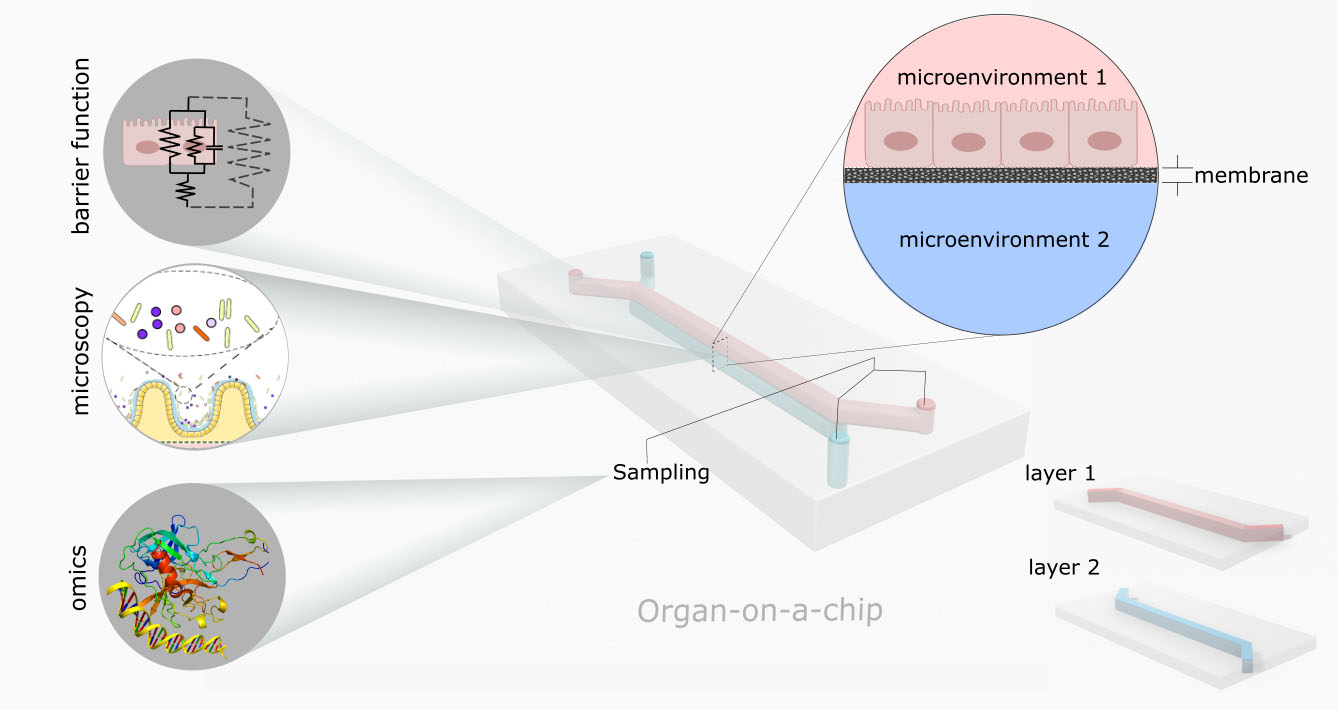
Your Gut’s Microbiome, On a Chip
In APL Bioengineering, researchers describe how gut-on-a-chip devices can bridge lab models and human biology. Modeling the microbiome is particularly difficult because of its unique environmental conditions, but through creative design, gut-on-a-chip devices can simulate many of these properties, such as the gut’s anaerobic atmosphere, fluid flow, and pulses of contraction/relaxation. Growing intestinal cells in this environment means that they more closely resemble human biology compared to standard laboratory cell cultures.
Ming Ye: Then and Now / 2012 Early Career Award Winner
The DOE Early Career Research Program Award allowed Ming Ye at Florida State University to develop interdisciplinary approaches to quantify and reduce uncertainty in environmental studies.
Researchers Fix ‘Fundamental Flaw,’ Improving Pandemic Prediction Model
Researchers identified and addressed a flaw in a commonly used pandemic model that can cause the model to severely underestimate disease spread.
New model predicts US recessions, slowdowns based on level of financial misreporting in economy
Researchers at the Indiana University Kelley School of Business and the University of Missouri have devised a more accurate model to predict recessions and economic slowdowns, based on the aggregate probability of financial misreporting in the economy. Kelley School accounting professors Messod D. Beneish and David B. Farber found that recessions and economic slowdowns are more probable when there is a higher likelihood that financial statements have been manipulated.
High-Pressure Systems Favor Sea-Breeze Convection Over Southeastern Texas
In the summer, sea- and bay-breeze circulations are important drivers of the weather in southeastern Texas. This research used machine learning techniques to unpack how these circulations interact with larger-scale weather systems to affect how thunderstorms form in the Houston area. These insights are helping researchers focus their study of aerosol and cloud life cycle, aerosol-cloud interactions, and air quality during the TRACER field campaign in the Houston area in 2021 and 2022.
Polarized X-rays reveal shape, orientation of extremely hot matter around black hole
Researchers’ recent observations of a stellar-mass black hole called Cygnus X-1 reveal new details about the configuration of extremely hot matter in the region immediately surrounding the black hole. Matter is heated to millions of degrees as it is pulled toward a black hole. This hot matter glows in X-rays. Researchers are using measurements of the polarization of these X-rays to test and refine models that describe how black holes swallow matter, becoming some of the most luminous sources of light — including X-rays — in the universe.
A new approach, not currently described by the Clean Air Act, could eliminate air pollution disparities
A team led by researchers at the University of Washington compared three potential strategies for reducing fine particulate matter pollution disparities across the contiguous U.S.
New Computational Tools to Help Target Sex, Labor Trafficking Operations
Researchers have developed computational models that can help fight human trafficking. The models draw on publicly available data to identify massage businesses that are most likely to be violating laws related to sex trafficking and labor trafficking.
Landmark Study of Biomarker Data May Enable Better Treatment for Early Onset Dementia
In a study publishing in Nature Medicine on September 22, 2022, University of California San Francisco researchers Adam Staffaroni, PhD, and Adam Boxer, MD, PhD, combined and harmonized clinical, neuroimaging, and fluid biomarkers from nearly all familial FTD clinical research participants across North America and Europe. With that data, they developed models of clinical and biomarker dynamics to determine the temporal sequence of biomarker and clinical changes in f-FTD before disease progression begins.
Muscle Models Mimic Diabetes, Inform Personalized Medicine
Scientists are using in vitro skeletal muscle engineering to gain a better understanding of the complex genetic and environmental factors underlying diabetes, putting lab-grown, healthy skeletal muscle tissues in a state resembling diabetes or growing skeletal muscle from diabetic patients’ muscle stem cells. In Biophysics Reviews, researchers describe how skeletal muscle engineering has advanced significantly during the past few decades and recent developments that make it easier to explore diabetes in humans and have led to more personalized medicine.
Jaime Marian: Then and Now / 2012 Early Career Award Winner
Jaime Marian is a professor at UCLA in the Department of Materials Science and Engineering, studying irradiation to develop materials and improve fusion reactor designs.
Stars Shed Light on Why Stellar Populations Are So Similar in Milky Way
Using highly detailed simulations, a collaborative team led by researchers from the University of Texas at Austin has made a breakthrough discovery that star formation is a self-regulatory process, knowledge that may allow researchers to understand star formation within our own and far away galaxies.
Wildfires disproportionately affect the poor
With fires raging from California to Alaska, the 2022 wildfire season is off to a violent start. It’s an ominous sign of what promises to be another record-breaking fire season in the U.S. Roughly 2 million acres burned last month. And major fires are currently scorching Idaho, Utah and California, threatening tens of thousands of Americans’ homes and livelihoods. Many of those at risk are lower-income Americans who face canceled homeowners insurance policies and rising premiums, according to new research from the University of Georgia.
Spiral Wave Teleportation Theory Offers New Path to Defibrillate Hearts, Terminate Arrhythmias
Researchers from the Georgia Institute of Technology offer a new method to disrupt spiral waves that uses less energy and that may be less painful than traditional defibrillation.
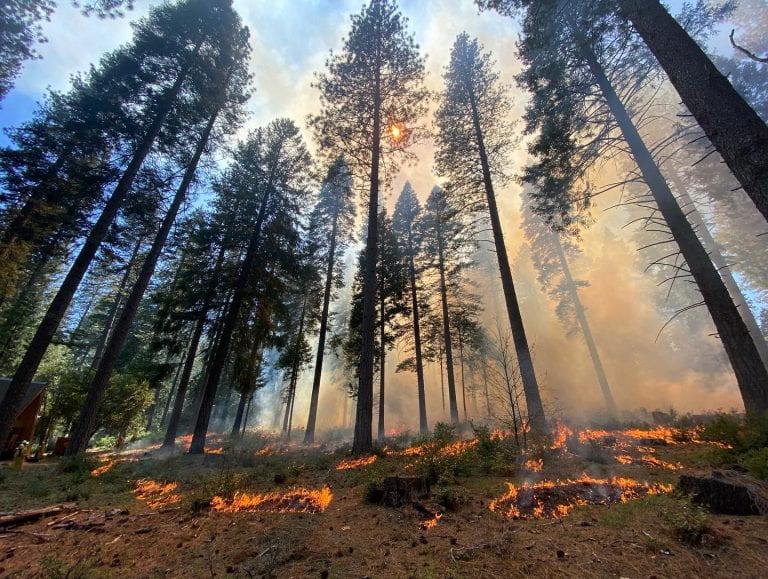
Human-triggered California wildfires more severe than natural blazes
Irvine, Calif., June 6, 2022 – Human-caused wildfires in California are more ferocious than blazes sparked by lightning, a team led by scientists from the University of California, Irvine reported recently in the journal Nature Communications. The research could help scientists better understand fire severity and how likely a blaze is to kill trees and inflict long-term damage on an ecosystem in its path.
Capturing Biogeochemical Details in River Corridor Models
In many streams and rivers, water moves between the open channel and the adjacent groundwater, enabling reactions that can remove or transform carbon, contaminants, and nutrients. Researchers developed a new modeling strategy to represent these effects in watershed-scale models. The new model addresses current models’ limited ability to simulate how carbon, nutrients, and contaminants move and transform in river corridors and allows for a new generation of research on river networks.
Forecasting Wildfires in an Unprecedented Time
With wildfires becoming stronger and more frequent, there is a need to predict when and how the next wildfire might occur. By examining statistical data of California’s wildfires dating back more than 60 years, Michael Mann, an associate professor of…
These stunning 3D models of coral reefs are a crucial research tool
Martínez Quintana has created stunning 3D digital models that visualize the surface of coral reefs in painstaking detail. The artful re-creations aren’t just beautiful: They’re also filled with data on the distribution of young corals, known as recruits, that scientists are analyzing.
Researchers Find Way to Make Traffic Models More Efficient
Models that predict traffic volume for specific times and places inform everything from traffic-light patterns to apps that tell you how to get from Point A to Point B. Researchers have now demonstrated a method that makes these models more efficient.
Tread lightly: ‘Eggshell planets’ possible around other stars
Strange ‘eggshell planets’ are among the rich variety of exoplanets possible, according to a study from Washington University in St. Louis. These rocky worlds have an ultra-thin outer brittle layer and little to no topography. Such worlds are unlikely to have plate tectonics, raising questions as to their habitability.
Can Proteins Bind Based Only on Their Shapes?
Proteins bind together through a complex mix of chemical interactions. What if some proteins bind due to their shapes, a much simpler process? Researchers used the Summit supercomputer to model a type of interaction that requires proteins to chemically “fit” precisely. The team found that among a sample of 46 protein pairs that bind to one another, 6 often assembled based on their shapes.
Ranked choice, multimember districts could ‘handicap’ gerrymandering
New research from Cornell University lays out in detail why ranked-choice voting (RCV), combined with multi-member legislative districts, promotes fair representation and severely limits the gerrymanderers’ ability to draw themselves into the Election Day winner’s circle
In lonely desert landscapes, hunting for clues about pyroclastic surges
The history of pyroclastic surges is written in the landscapes they ravage. Volcanic dunes and other deposits hold debris from ancient eruptions, as do craters marking sites of ancient blasts. This study focuses on Ubehebe and El Elegante.
Modernizing Hydropower with Digital Twins
The Digital Twins for Hydropower framework will help the industry to affordably modernize its aging hydropower fleet.
New data provides clearer picture of historic volcano collapse
Data collected by University of Rhode Island Professor Stéphan Grilli and his colleagues will appear in Nature Communications, which is considered one of the world’s leading multidisciplinary science journals.
Iceland’s Fagradalsfjall is erupting. This UB expert helps predict where lava may go
Mattia de’ Michieli Vitturi, a geology faculty member and a mathematician, uses computational modeling to help officials in Iceland understand where lava may flow BUFFALO, N.Y. — The eruption of Fagradalsfjall on Iceland’s Reykjanes Peninsula, with lava emerging from multiple…
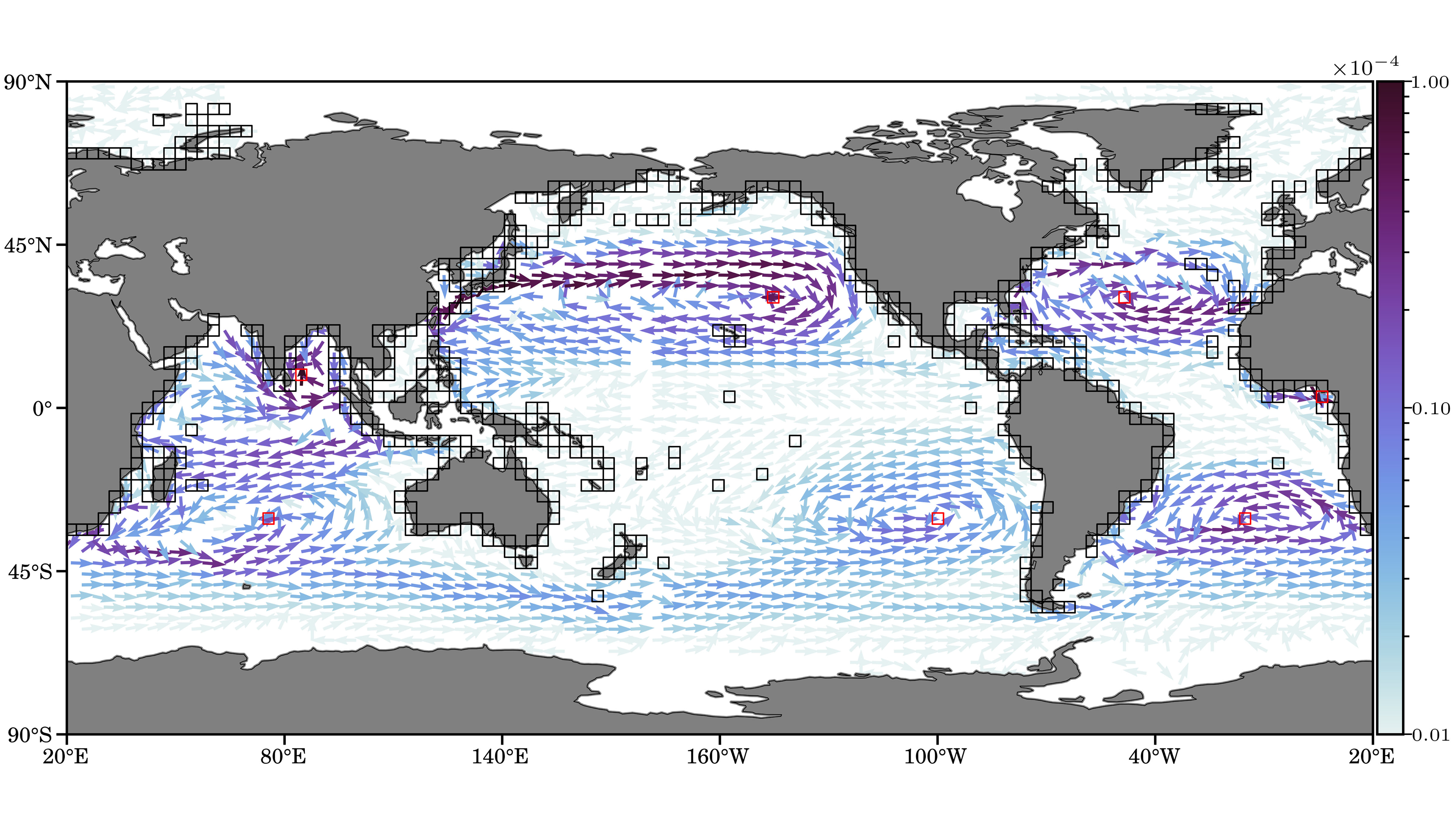
How Does Plastic Debris Make Its Way Into Ocean Garbage Patches?
Researchers in the U.S. and Germany decided to explore which pathways transport debris to the middle of the oceans, causing garbage patches, as well as the relative strengths of different subtropical gyres and how they influence long-term accumulation of debris. In Chaos, they report creating a model of the oceans’ surface dynamics from historical trajectories of surface buoys. Their model describes the probability of plastic debris being transported from one region to another.
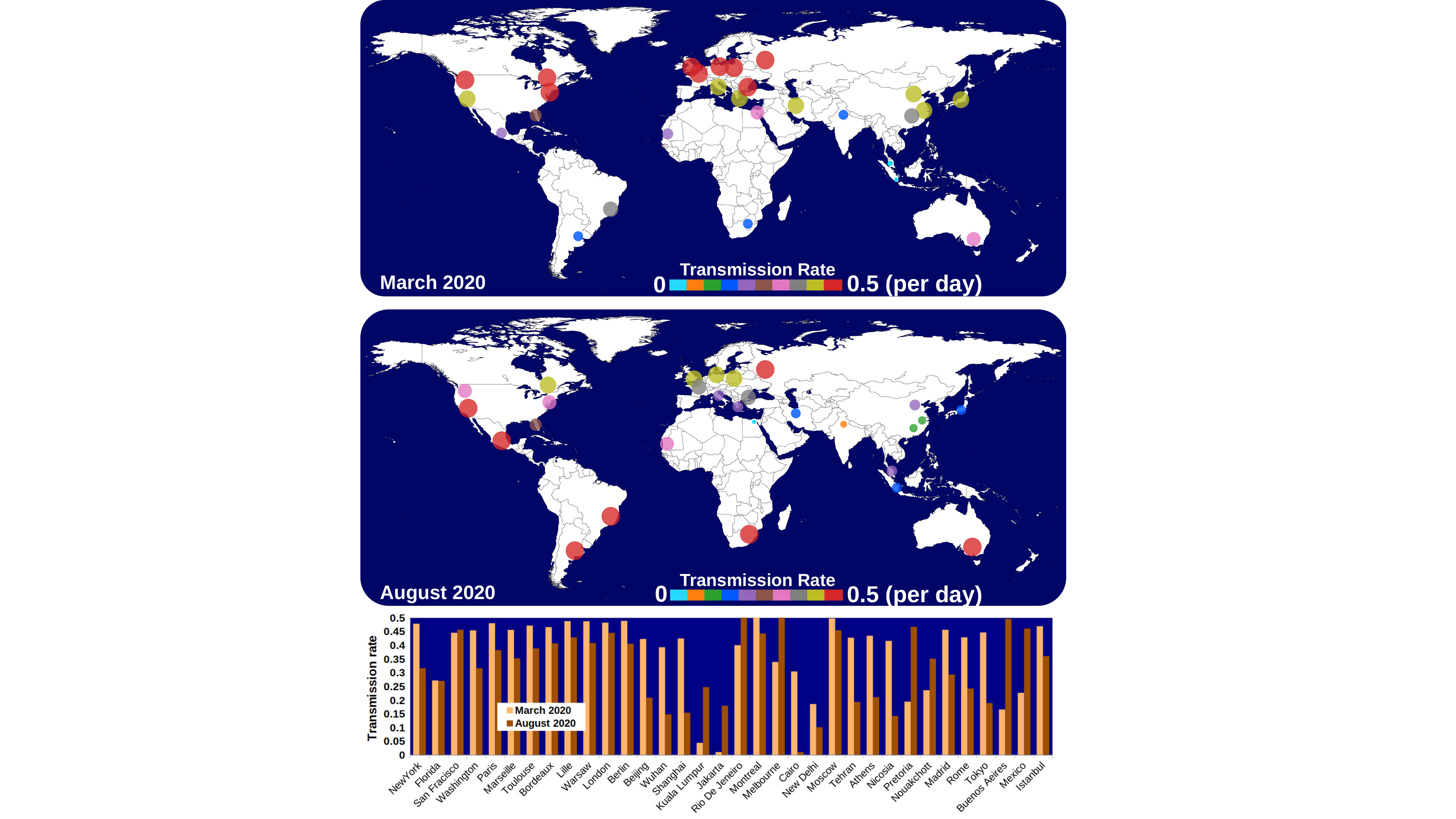
Temperature, Humidity, Wind Predict Second Wave of Pandemic
The “second wave” of the coronavirus pandemic has placed much blame on a lack of appropriate safety measures. However, due to the impacts of weather, research suggests two outbreaks per year are inevitable. Though face masks, travel restrictions, and social distancing guidelines help slow the number of new infections in the short term, the lack of climate effects incorporated into epidemiological models presents a glaring hole that can cause long-term effects. In Physics of Fluids, researchers discuss the impacts of these parameters.
Tread tester
Sandia National Laboratories and The Goodyear Tire & Rubber Co. have developed a virtual means of showing a tire’s performance before the first prototypes are ever built. Computer simulations test a virtual tire on a virtual test machine that simulates actual road conditions.

Story tips: Volcanic microbes, unbreakable bonds and flood mapping
ORNL story tips: Volcanic microbes, unbreakable bonds and flood mapping
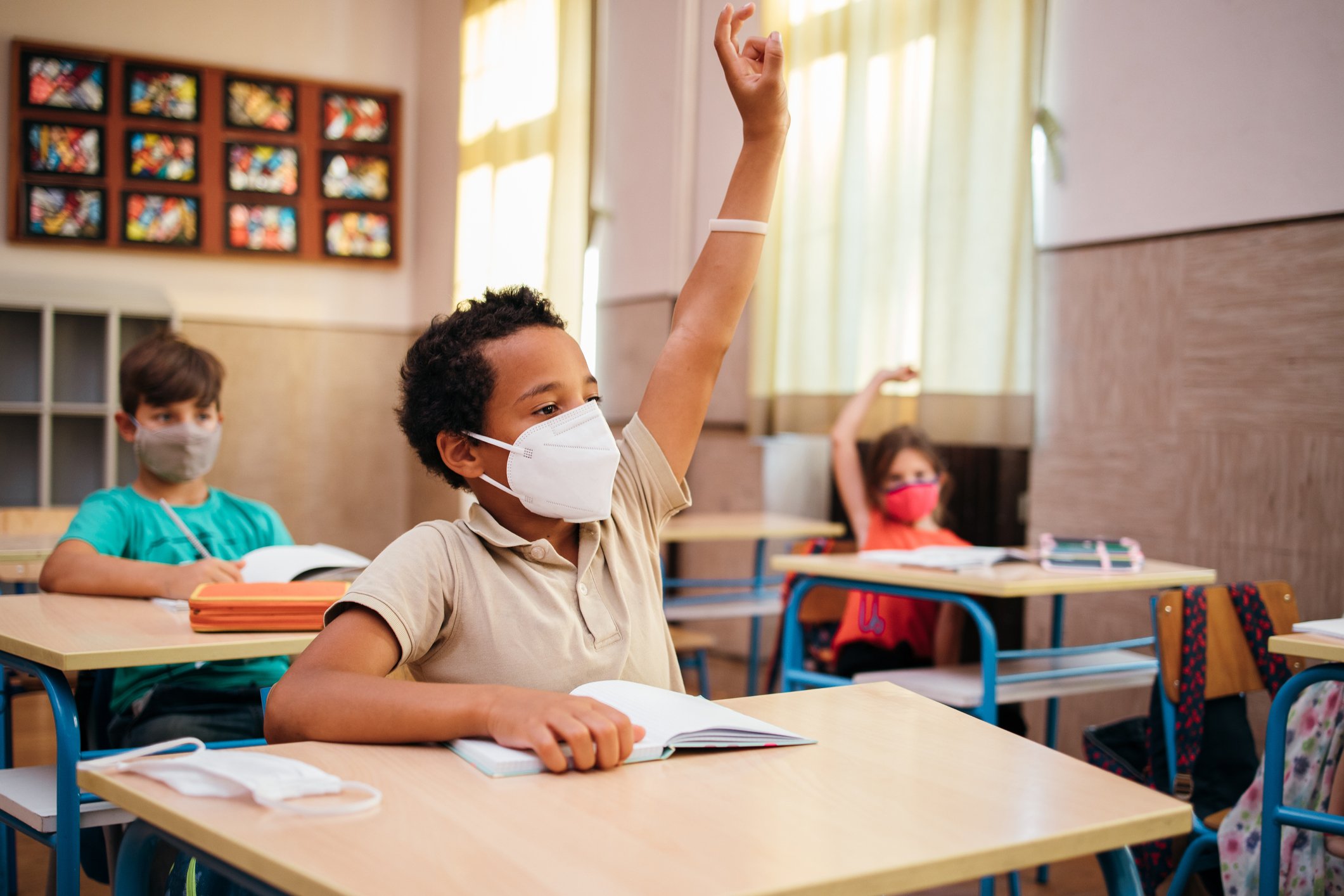
SARS-CoV-2 Transmission Model Offers Decision-Making Pathways for Safe School Opening
Can schools safely remain open or reopen during periods of significant community spread of COVID-19? According to predictions from a model of SARS-CoV-2 transmission in the school setting, yes – if appropriate precautions are followed both in school and in the community.
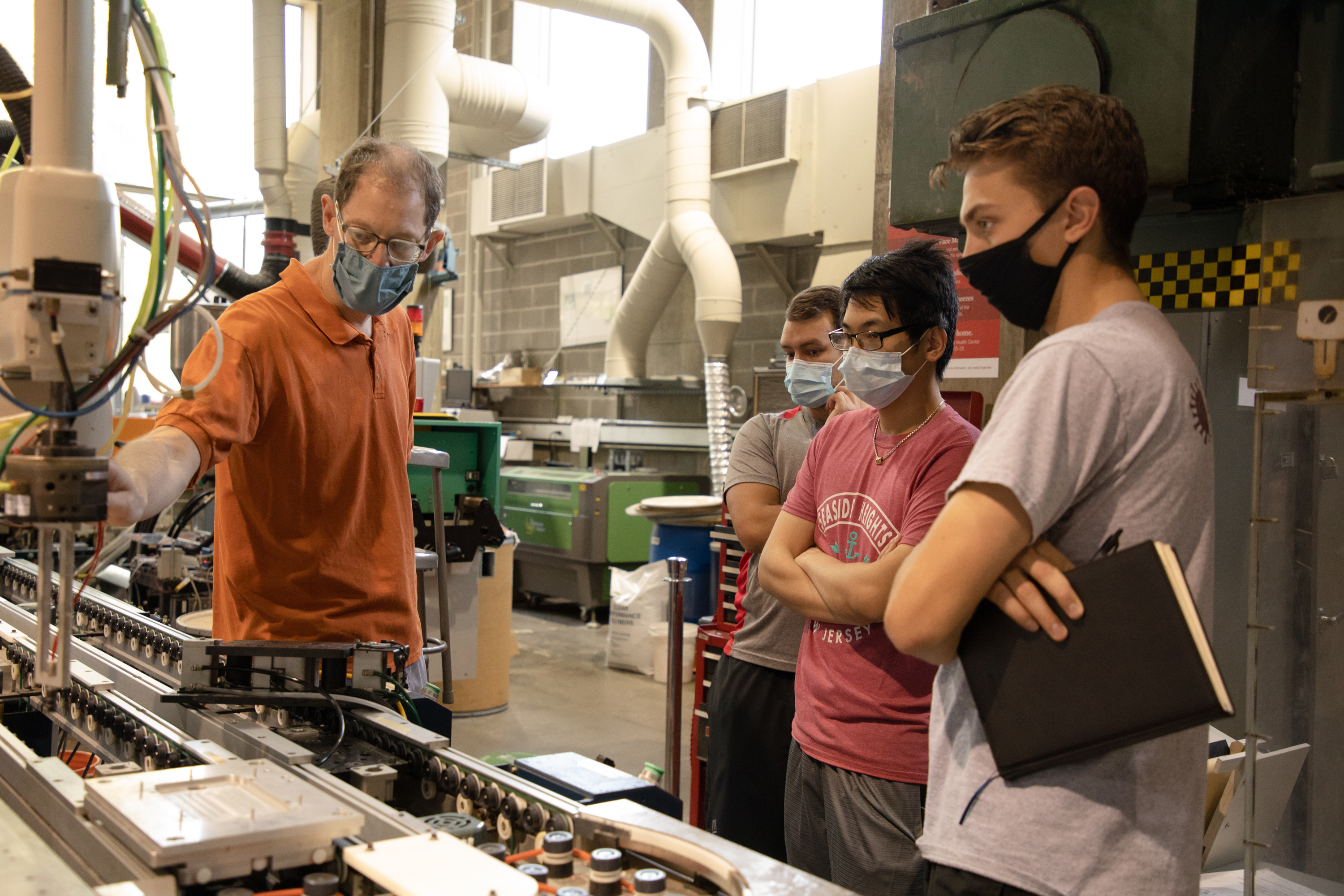
App Developed at Rensselaer Can Help Guide COVID-19 Management on Any Campus
Leaders at Rensselaer Polytechnic Institute relied on a powerful algorithm, COVID Back-to-School – now freely available to the public – to determine that twice-weekly testing of all students would be the optimal regimen for keeping the infection rate on campus safely below 1% for any two-week period.
Final GW Election Model Project Using Twitter Activity Forecasts Sizable Biden Victory
The final PEORIA Project election forecast from the George Washington University Graduate School of Political Management (GSPM) predicts former Vice President Joe Biden will win the electoral vote count for the 2020 presidential election.
Researchers Use New Model to Predict Multiorgan Failure in Severe Pancreatitis
Article title: Severe acute pancreatitis: Capillary permeability model linking systemic inflammation to multiorgan failure Authors: Nicole L. Komara, Pedram Paragomi, Phil J. Greer, Anette S. Wilson, Cameron Breze, Georgios I. Papachristou, David C. Whitcomb From the authors: “With the use of…
Linking AI with Crop Simulation Models to Understand and Predict Agricultural Systems Dynamics
Artificial intelligence and simulation models use agricultural data for crop improvement

Interactions Within Larger Social Groups Can Cause Tipping Points in Contagion Flow
Contagion processes, such as opinion formation or disease spread, can reach a tipping point, where the contagion either rapidly spreads or dies out. When modeling these processes, it is difficult to capture this complex transition. In the journal Chaos, researchers studied the parameters of these transitions by including three-person group interactions in a contagion model called the susceptible-infected-susceptible model. In this model, an infected person who recovers from an infection can be reinfected.
Bending the curve of biodiversity loss
A major new study suggests that without ambitious, integrated action combining conservation and restoration efforts with a transformation of the food system, turning the tide of biodiversity loss by 2050 or earlier will not be possible.
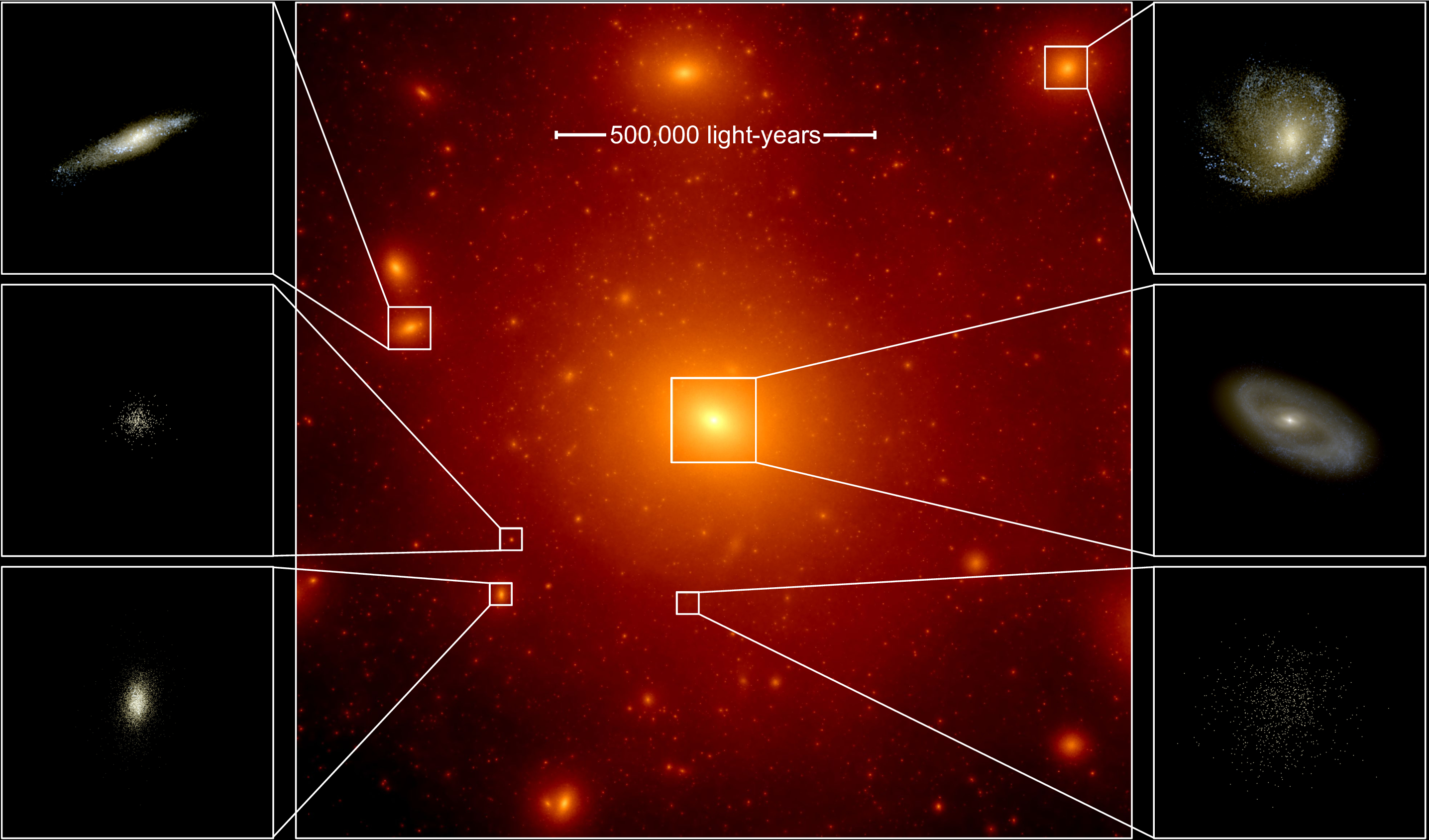
Galaxy Simulations Could Help Reveal Origins of Milky Way
Rutgers astronomers have produced the most advanced galaxy simulations of their kind, which could help reveal the origins of the Milky Way and dozens of small neighboring dwarf galaxies. Their research also could aid the decades-old search for dark matter, which fills an estimated 27 percent of the universe. And the computer simulations of “ultra-faint” dwarf galaxies could help shed light on how the first stars formed in the universe.
UW team developing model to help lower COVID-19 infections in Seattle, other major cities
A UW team has received a grant to develop a model that uses local data to generate policy recommendations that could help lower COVID-19 infections in King County, which includes Seattle.

Big Data Analytics Enables Scientists to Model COVID-19 Spread
Researchers will use big data analytics techniques to develop computational models to predict the spread of COVID-19. They will utilize forward simulation from a given patient and the propagation of the infection into the community; and backward simulation tracing a number of verified infections to a possible patient “zero.” The project also will provide quick and automatic contact tracing and leverages the researchers’ prior experience in modeling Ebola spread.
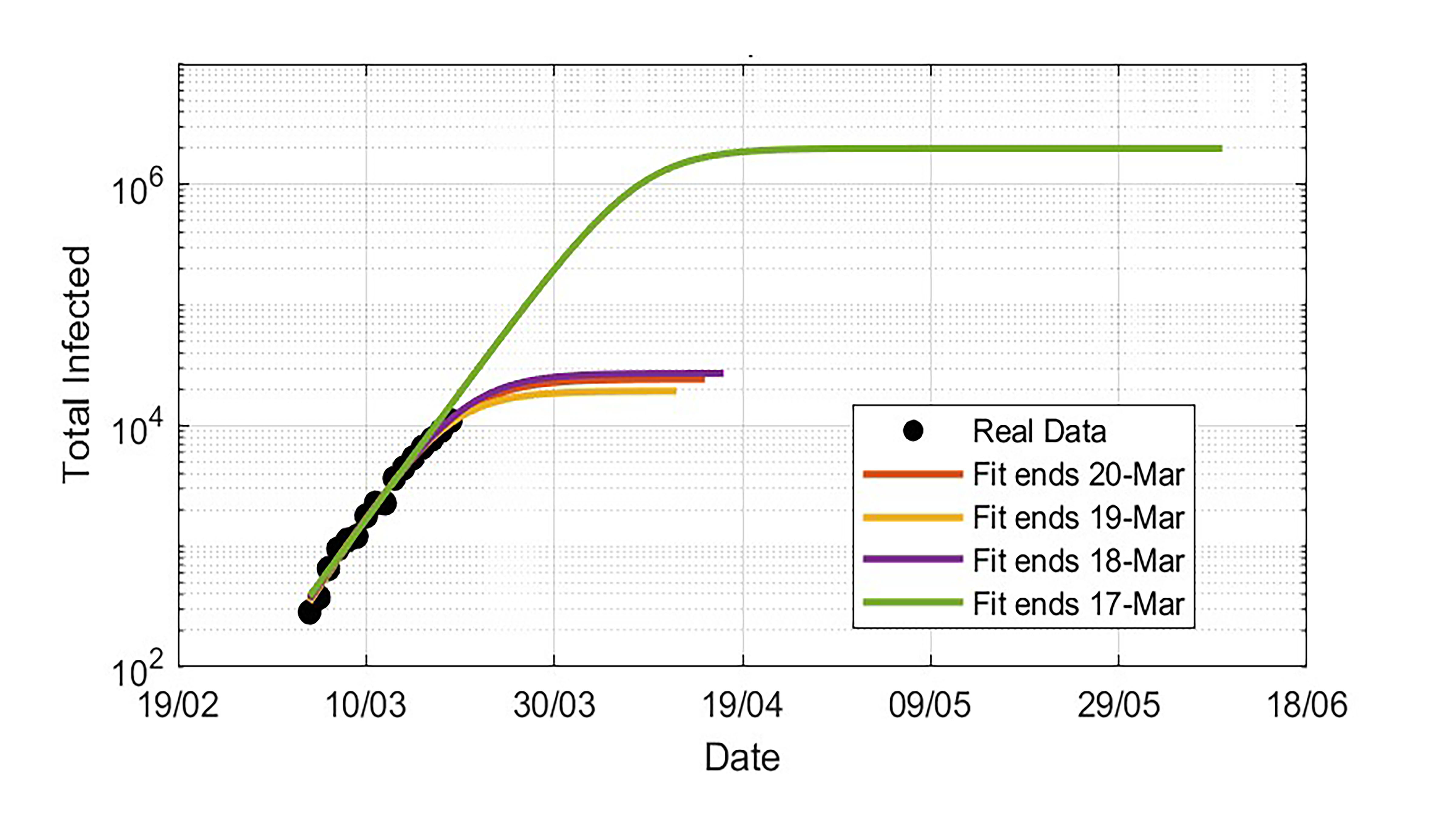
Modeling COVID-19 Data Must Be Done With Extreme Care
As the virus causing COVID-19 began its devastating spread, an international team of scientists was alarmed by the lack of uniform approaches by various countries’ epidemiologists. Data modeling to predict the numbers of likely infections varied widely and revealed a high degree of uncertainty. In the journal Chaos, the group describes why modeling and extrapolating the evolution of COVID-19 outbreaks in near real time is an enormous scientific challenge that requires a deep understanding of the nonlinearities underlying the dynamics of epidemics.
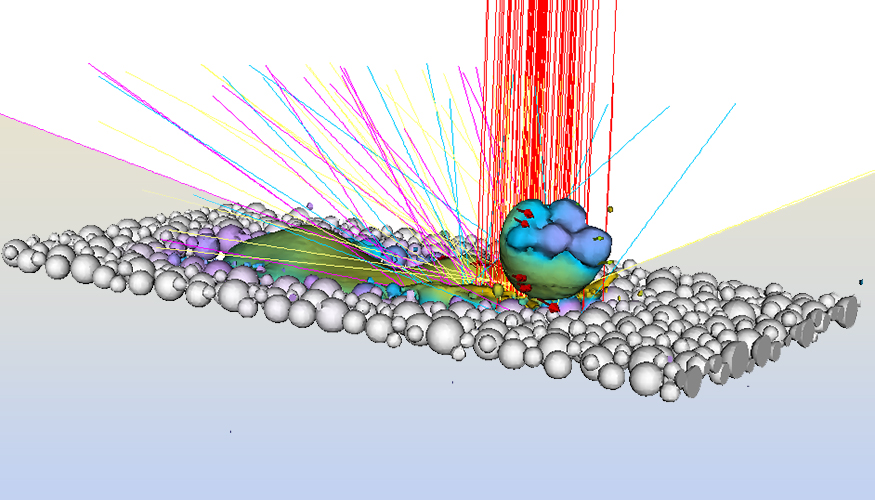
LLNL researchers devise strategy for reducing defects in popular metal 3D printing method
Combining high-fidelity computer simulations with ultra-high-speed X-ray imaging, researchers at Lawrence Livermore National Laboratory have discovered a strategy for reducing or even eliminating defects in parts built through a common, laser-based metal 3D-printing process.

A New Way to Accurately Estimate COVID-19 Death Toll
A Rutgers engineer has created a mathematical model that accurately estimates the death toll linked to the COVID-19 pandemic in the United States and could be used around the world. The model, detailed in a study published in the journal Mathematics, predicted the death toll would eventually reach about 68,120 in the United States as a result of the SARS-CoV-2 coronavirus that causes COVID-19. That’s based on data available on April 28, and there was high confidence (99 percent) the expected death toll would be between 66,055 and 70,304.
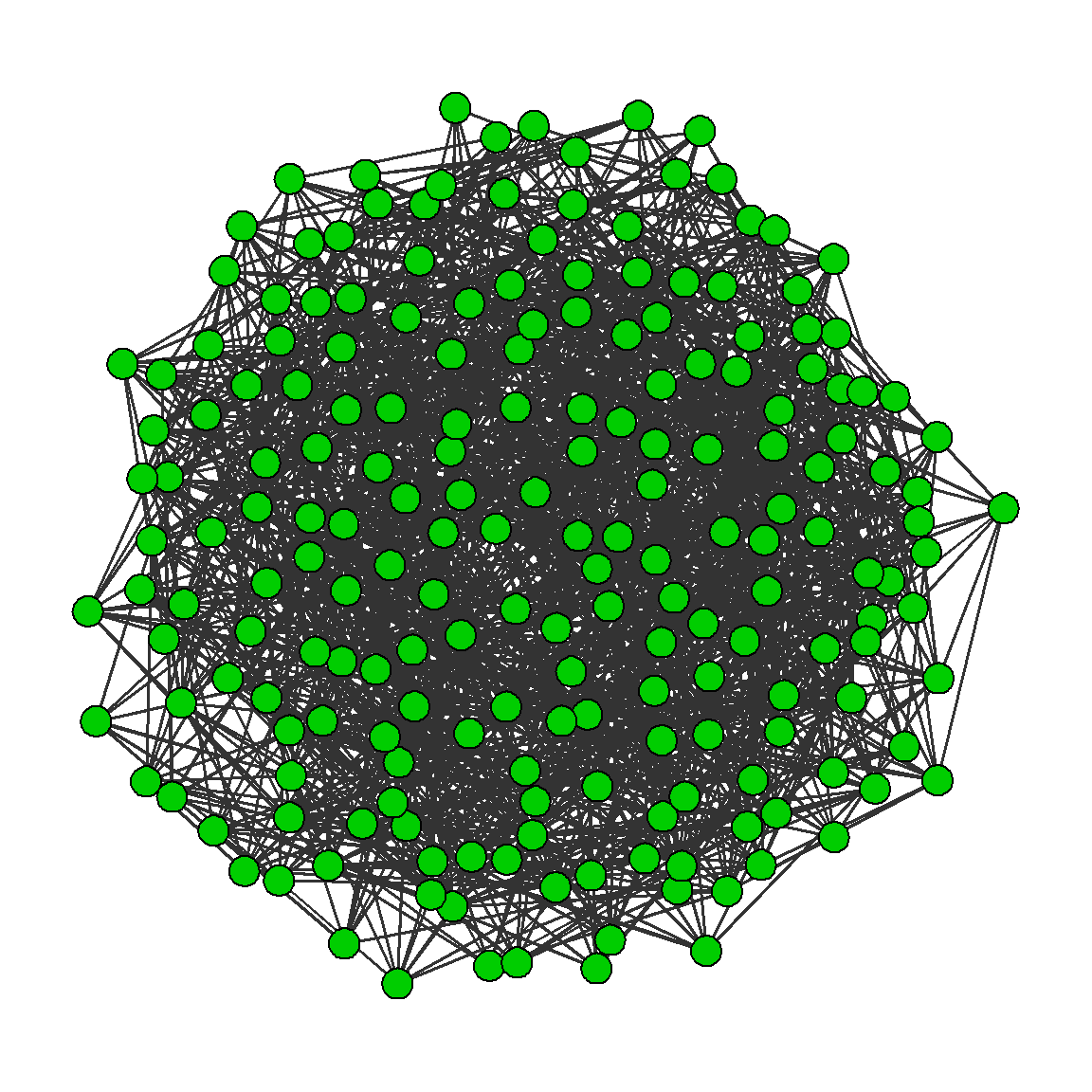
UW team illustrates the adverse impact of visiting ‘just one friend’ during COVID-19 lockdown
“What’s the harm in visiting just one friend?” A lot of people are asking that during times of social distancing. A new website illustrates how doing so would essentially reconnect most households in a community and provide conduits through which the COVID-19 virus could spread.
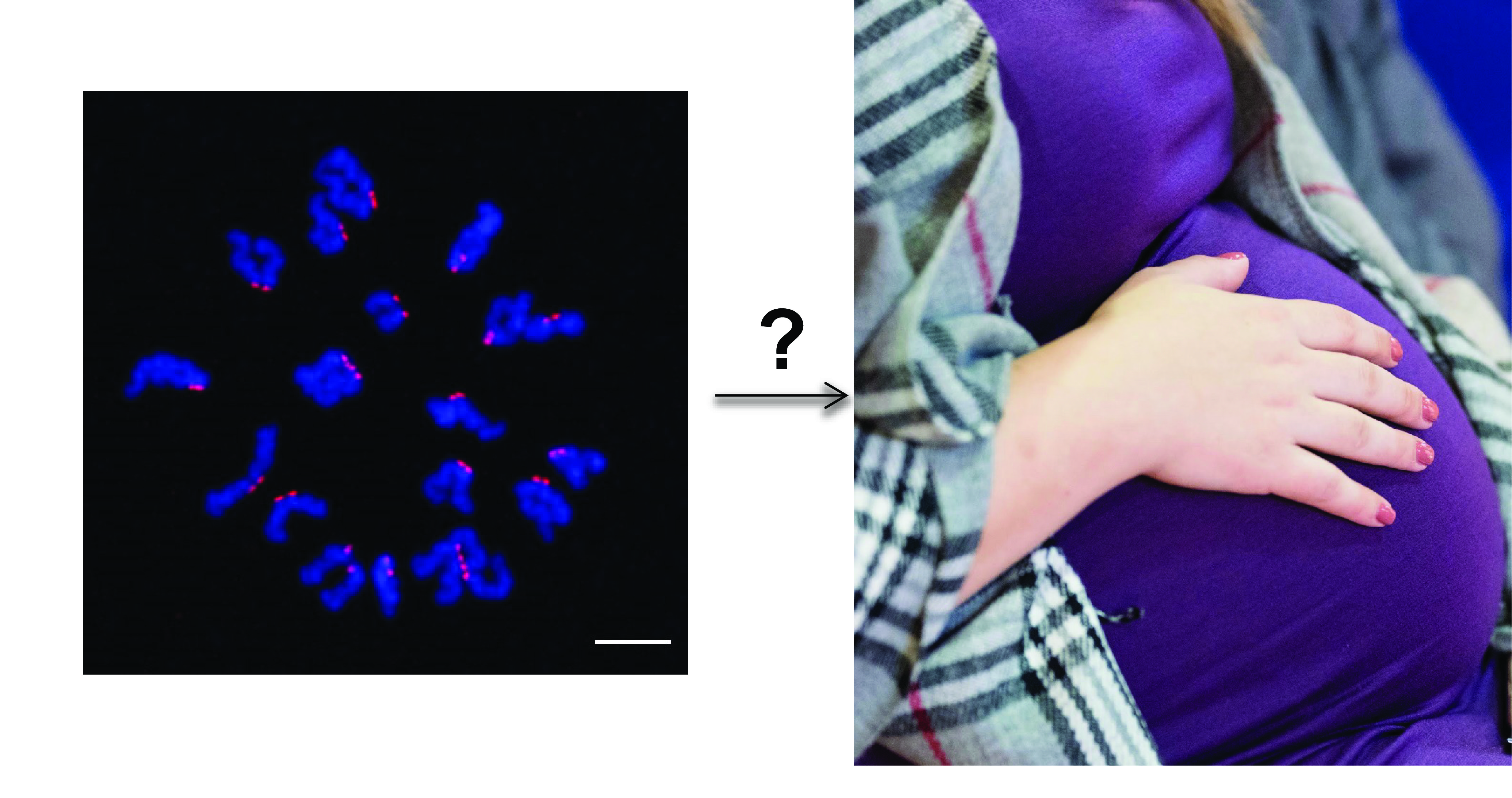
Why Do So Many Pregnancies and In Vitro Fertilization Attempts Fail?
Scientists have created a mathematical model that can help explain why so many pregnancies and in vitro fertilization attempts fail. The Rutgers-led study, which may help to improve fertility, is published in the journal Proceedings of the National Academy of Sciences.
US approaching peak of ‘active’ COVID-19 cases, strain on medical resources, new modeling shows
A new data-driven mathematical model of the coronavirus pandemic predicts that the United States will peak in the number of “active” COVID-19 cases on or around April 20, marking a critical milestone on the demand for medical resources.